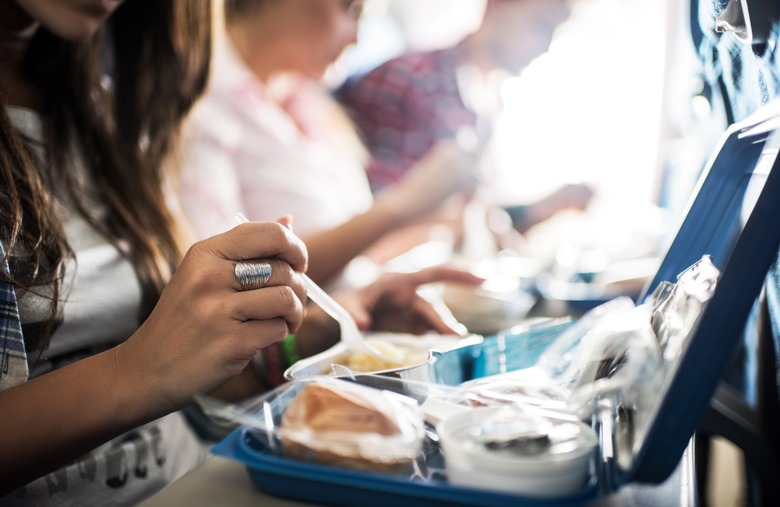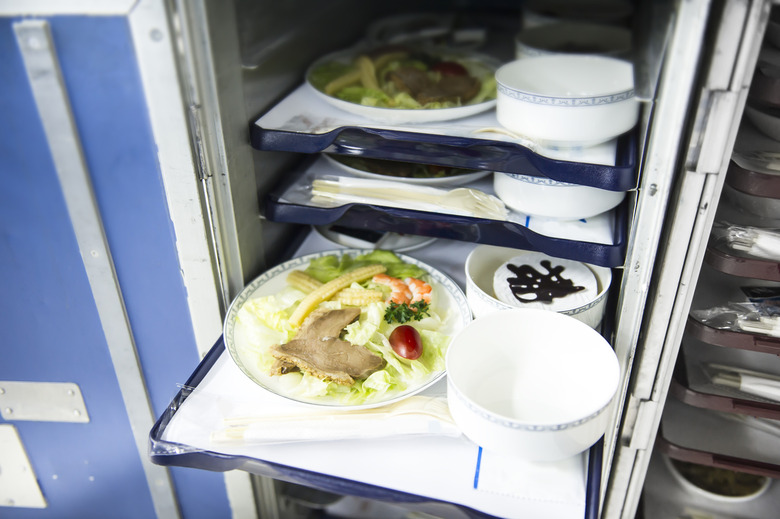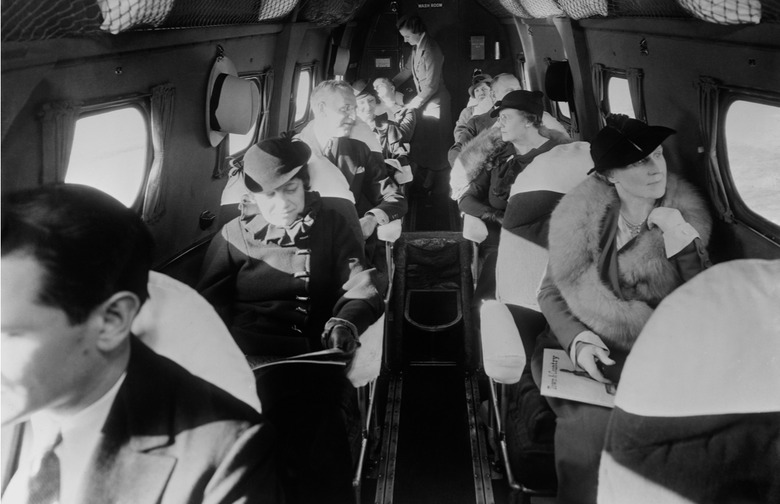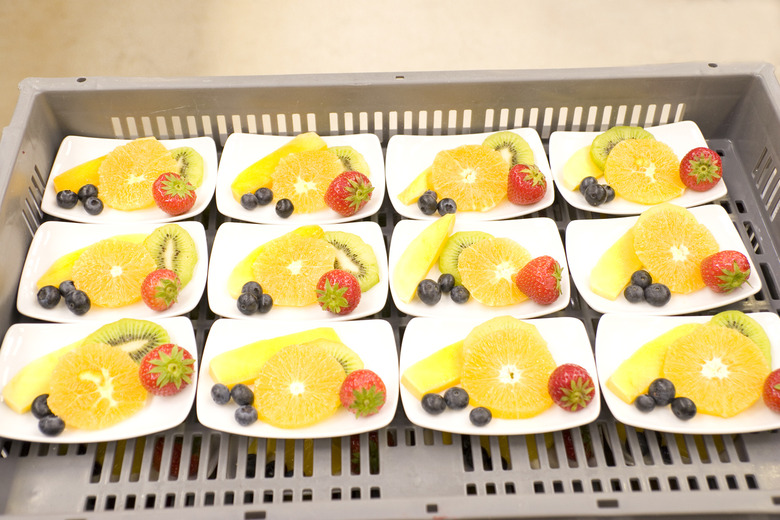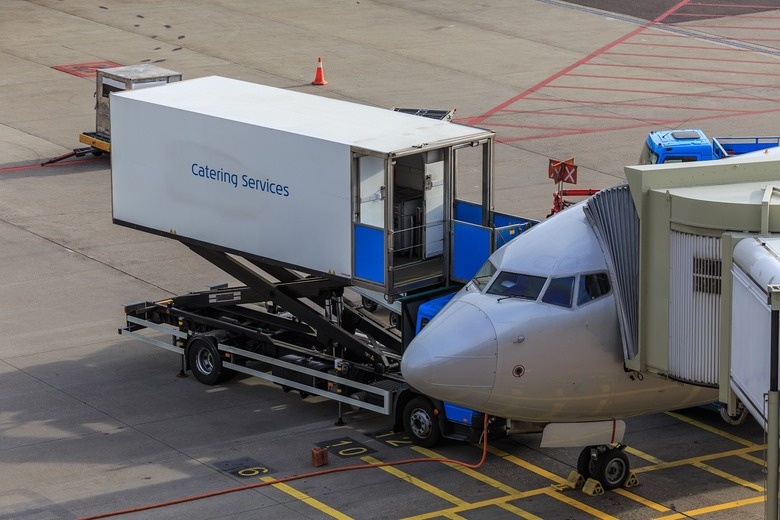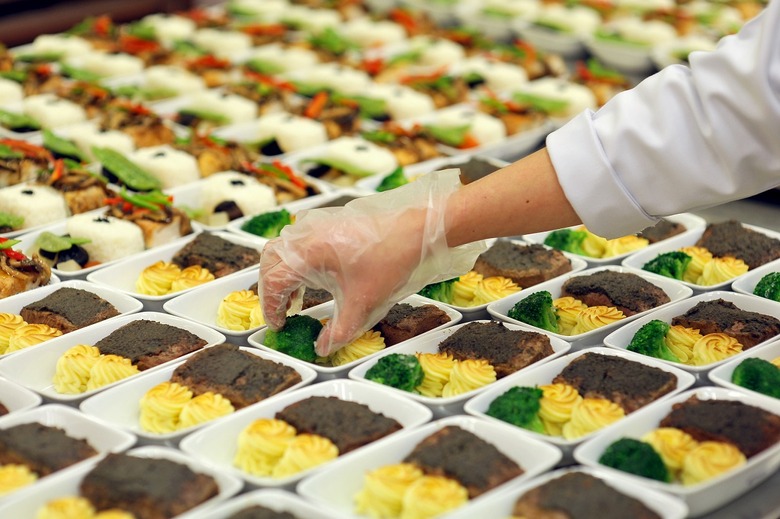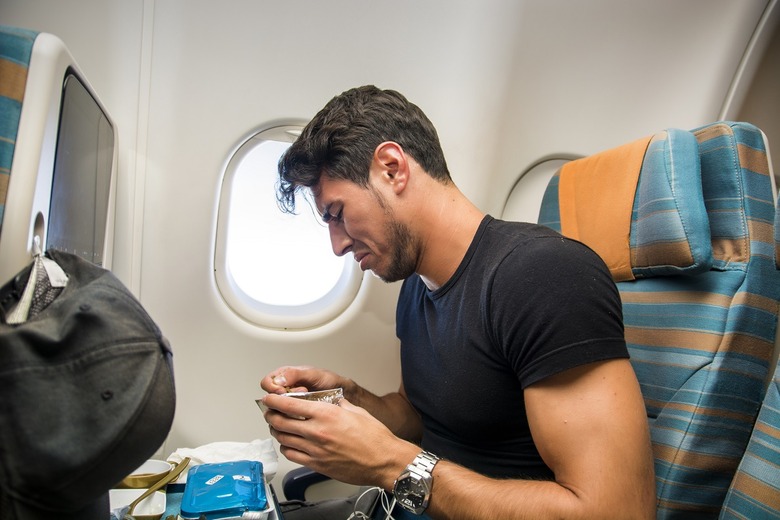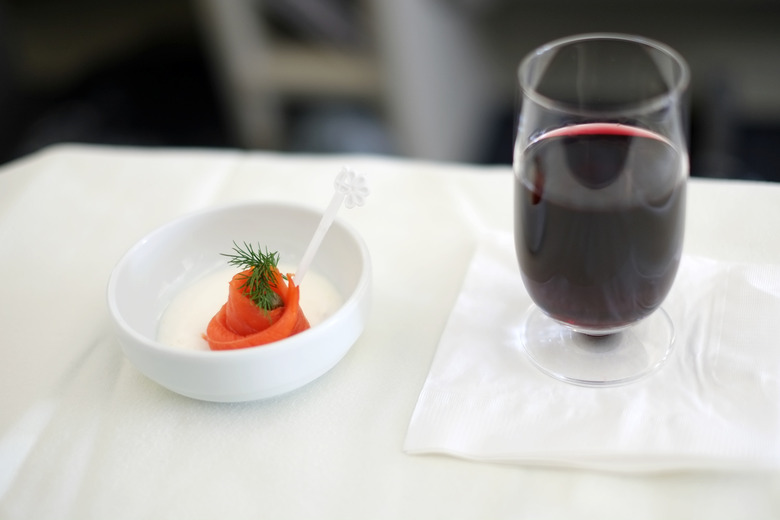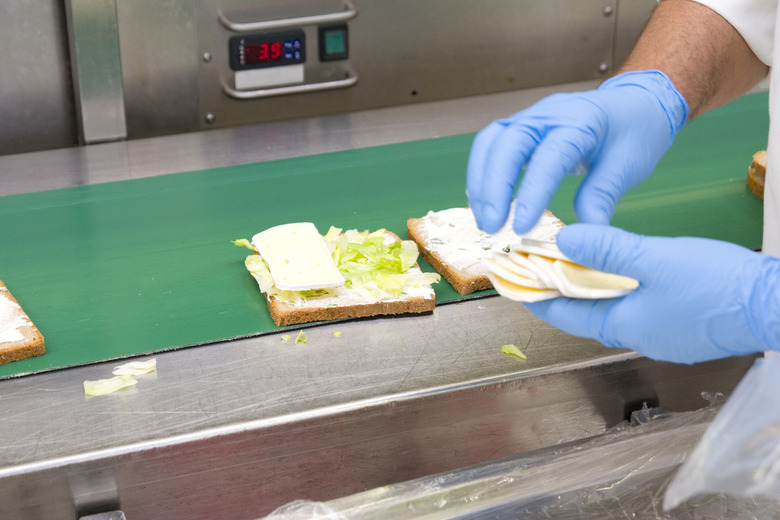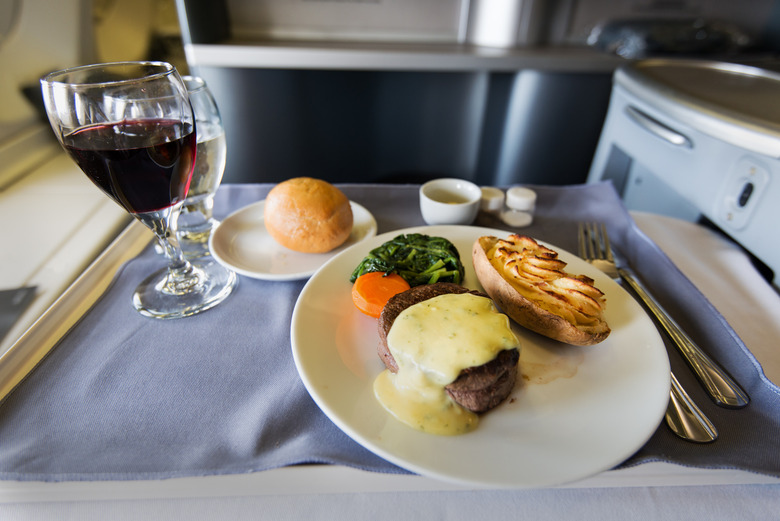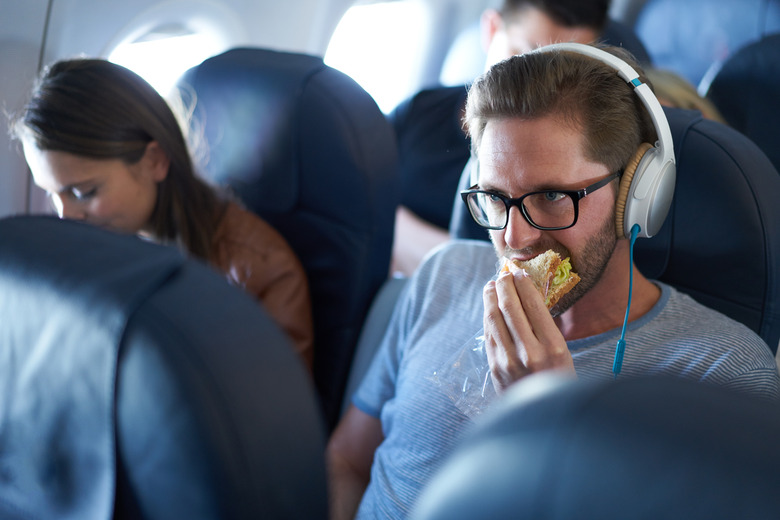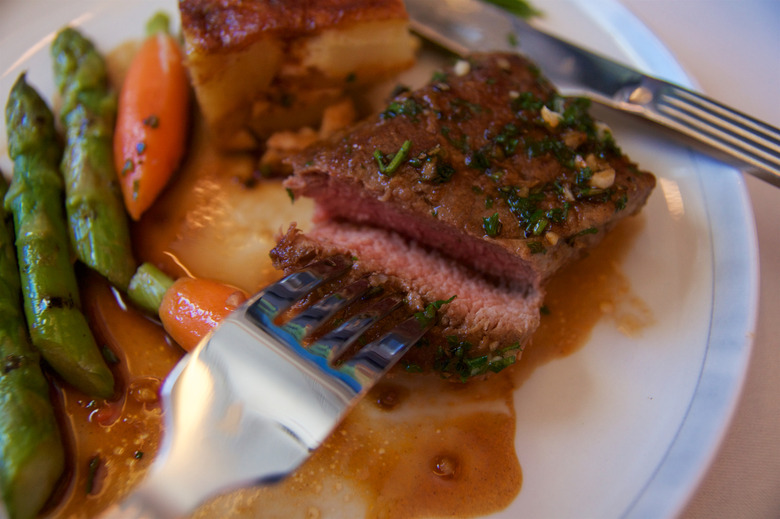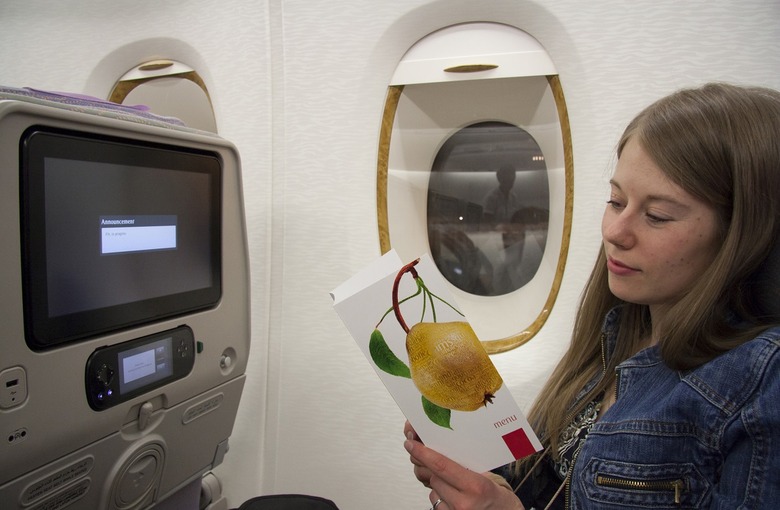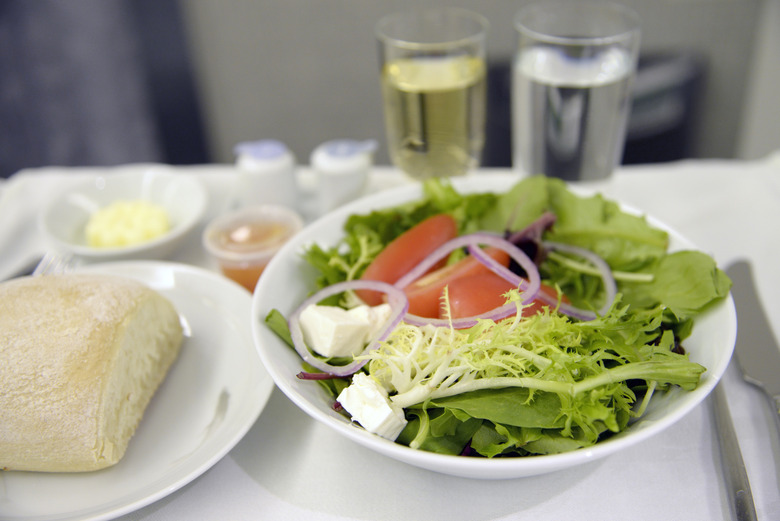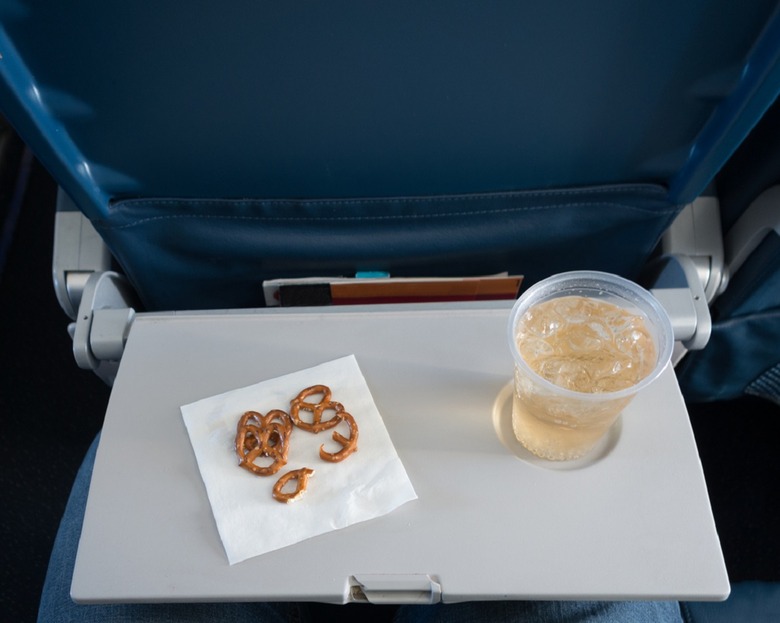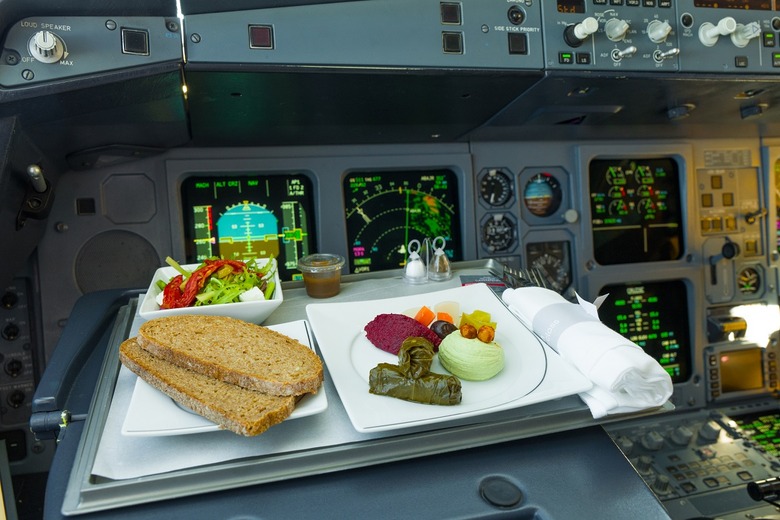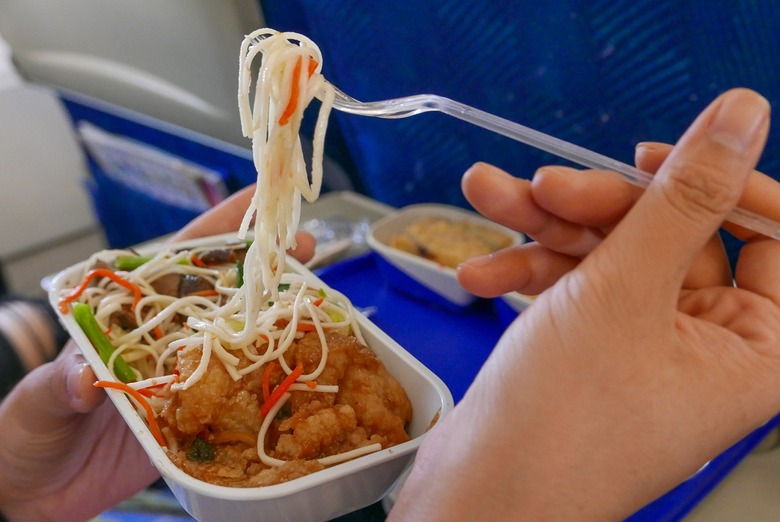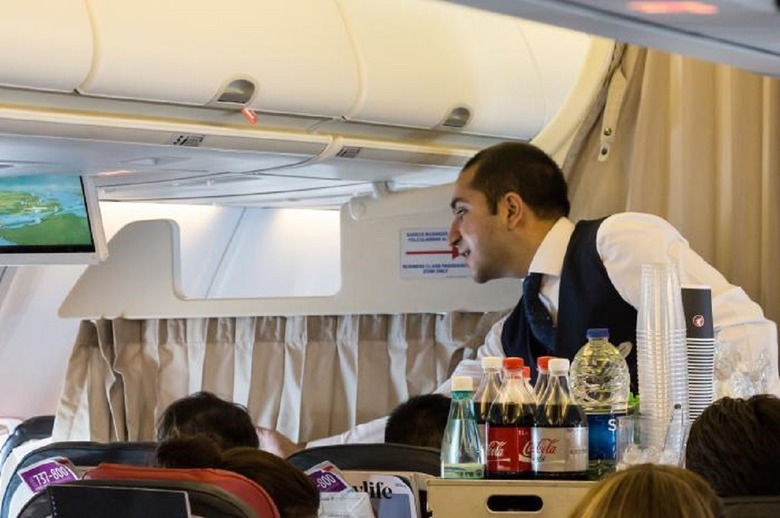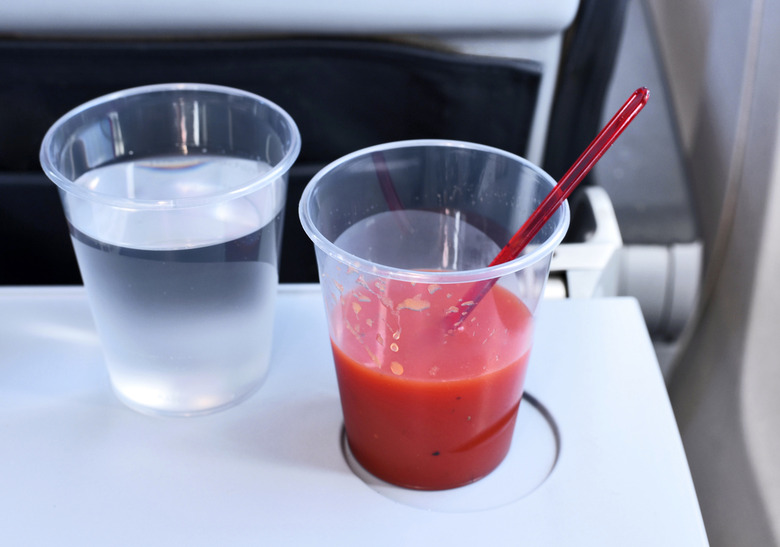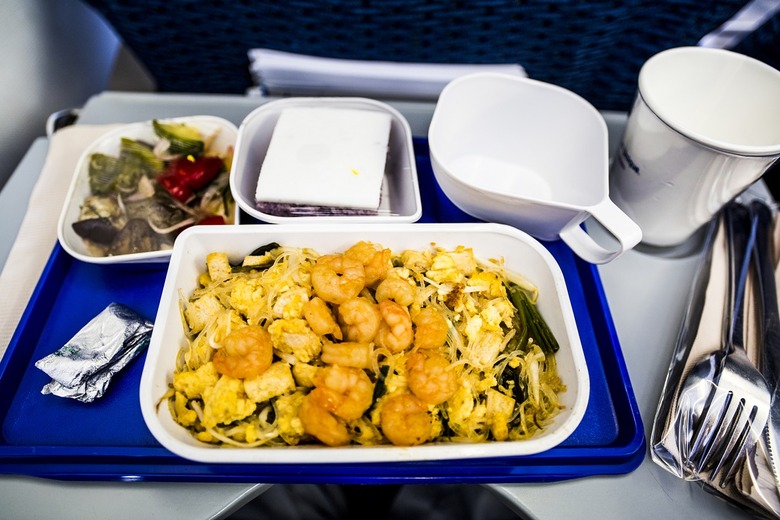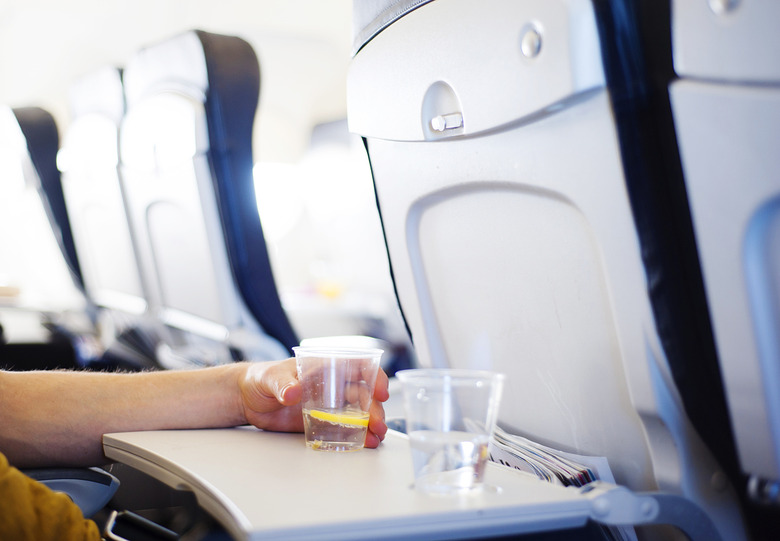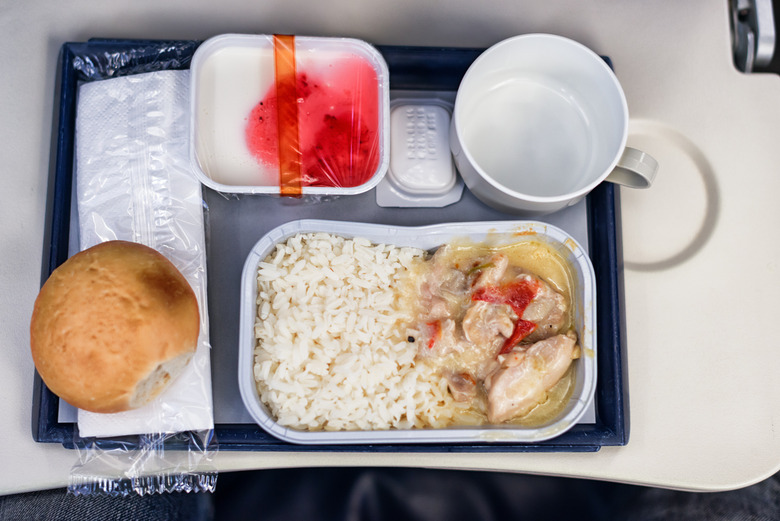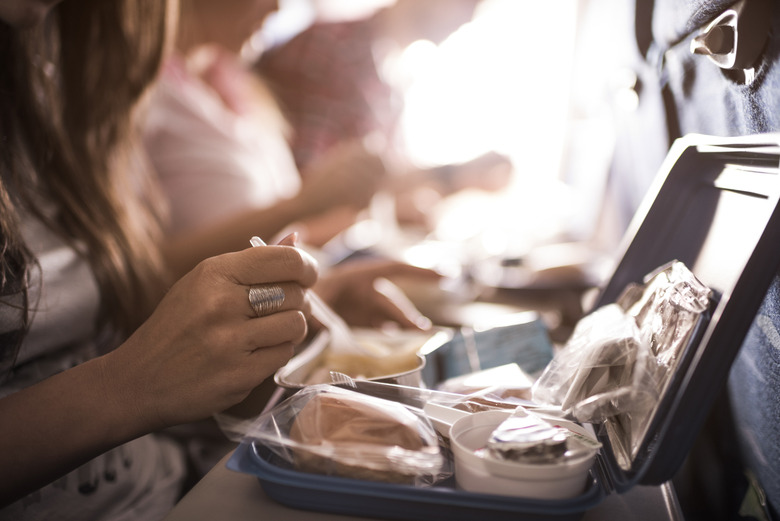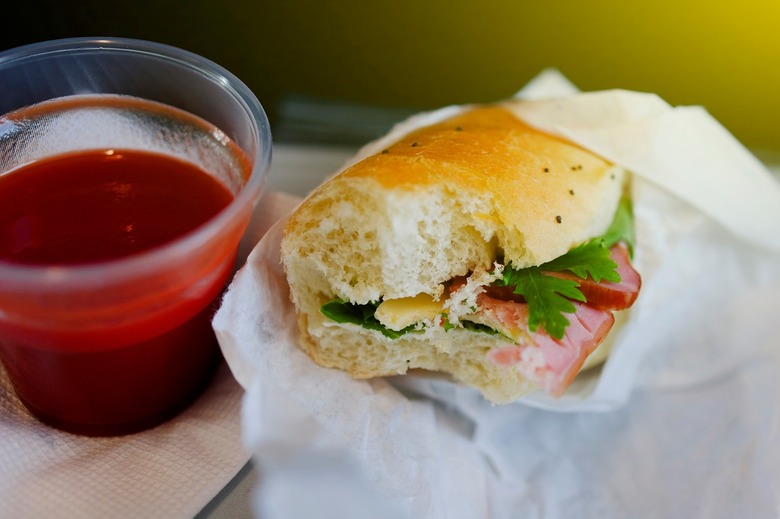25 Crazy Facts About Airplane Food
Frequent flyers tend to have a love-hate relationship with airplane food. While in-flight meals often get a bad rap, many airlines still distinguish themselves through their onboard offerings. Some airline passengers are better off eating something in the terminal before boarding, whereas others will be met with more tolerable in-flight options. The difference in food is also often a big reason why some choose to fly business or first class instead of economy.
Most airlines work hard to make sure their passengers are as comfortable as possible, and food is a big part of that. Decent food can be key to helping you survive a long flight, and airline catering has such importance to the overall business that a lot of thought and money goes into it. If you care about what you eat mid-air, you may find these 25 crazy facts about airplane food to be of interest.
Airline catering is a multibillion-dollar industry
Airline catering is a $13 billion global industry. The market size is expected to grow to $18 billion by 2021.
Airline food is 100 years old
Airlines can differ on how they want their fruit cut
Airlines are very precise about the requirements for their food. While many of them cater from the same companies, their requests from said companies may differ. Not only does this mean they order different foods, but how those foods are presented can be different too. Airlines are even known to request that their fruit be cut in a certain way or weigh a certain amount while still fitting into their bowls.
Flight delays can cause food waste
Whether you're a passenger or airline staff, it's hard to deal with flight delays. Not only does uneaten food get thrown out after every flight, but if the flight has been delayed for over six to eight hours, all the food that's already been loaded onto a plane also gets thrown out. The entire load of food will get replaced in order to ensure food safety and quality.
Food must be cooked on the ground
Airplanes don't have proper kitchens due to safety reasons. Instead, the food is mostly prepared on the ground prior to the flight, and it can only be reheated once on board. The cabin crew must then use a convection oven that blows hot, dry air over the food that needs to be heated up. Some of the newer models have steam ovens, which are better for keeping food moist.
Food tastes totally different mid-air
You're nowhere near alone if you despise airplane food. But it's not the in-flight meal, it's you. Food and drink taste very different to us at 30,000 feet due to humidity and low air pressure. At a high altitude, your ability to pick up sweet tastes drops by 15 to 20 percent, while your perception of saltiness drops by 20 to 30 percent.
Fruity wines are preferred
The changes in your taste buds at a high altitude affect what's on the wine menu. Wines that are more acidic and high in tannins aren't as enjoyable in flight, so most airlines tend to carry fragrant and fruity wines instead.
It isn’t exactly fresh
In-flight meals are generally prepared 10 hours before they're supposed to be eaten. Sometimes, however, they can be made up to 72 hours beforehand, after which they are frozen. It's totally safe, though. Under international food safety standards, airlines can freeze food for up to five days and still safely serve it to passengers.
It’s even more overpriced than you think
If you've flown before, you've likely noticed how expensive in-flight food and drink can be. A 2013 report found that airlines actually charge over 2,600 percent more than supermarkets. That's not even considering the gourmet options available on more luxurious airlines.
Loud cabin noise can affect how your food tastes
In addition to taste and smell, your hearing can also affect how you experience food. According to recent studies, constantly hearing loud noises while you're eating can cause your food to taste less sweet and less salty to you. Listening to music on your headphones can counter this, however.
Meat is not fully cooked
Beef is cooked only 30 percent to completion, and chicken only 60 percent, before being brought on board. Not to worry, however. The meat is then cooked the rest of the way on board in the airplane's convection or steam oven after getting blast-chilled in special fridges before transfer.
Menus are planned up to a year in advance
Airlines plan their in-flight menus at least six months in advance, and sometimes up to a full year ahead of time.
Menus are planned very carefully for financial reasons
A lot goes into all that planning, down to every single ingredient. American Airlines famously saved $40,000 a year in 1987 by getting rid of just one olive from their salads. According to Delta Airlines, 60 percent of the cost of each meal is because of the actual entrée, while appetizers make up 17 percent, salads 10 percent, and desserts account for 7 percent. Delta saved $250,000 a year by shaving just an ounce from their steaks, and similar to American, removed a single strawberry from their in-flight salads (served in first class on domestic routes) for savings of $210,000 a year.
Passengers accumulate millions of tons of trash every year
According to the International Air Transport Association, flight passengers generated a total of 5.7 million tons of trash in 2017. This statistic includes amenities such as toothbrushes, magazines and more, as well as toilet waste, but a significant portion comes from waste from in-flight meals. The waste is either incinerated or sent to landfills, rarely being recycled.
Not eating on the plane can be bad for your health
Make sure you don't go hungry during your flight. Neglecting to eat during your journey could cause your blood sugar levels to drop, making you feel weak and shaky. This can also lead to headaches and changes in mood. It won't help you fight jet lag, either, if you're traveling to a different time zone; it can actually worsen its effects.
Pilots have different meals
Co-pilots on a flight are given different meals. It's rare for in-flight meals to give you food poisoning, but this is done as an added precaution to make sure both pilots don't get sick!
Sauce is the way to go
Not only does the dry air at a high altitude dry out your sinuses, it also dries out your food. Sauce-based dishes such as pastas and curries do better as in-flight meals due to the fact that they are moist by nature. That's why most airlines tend to have saucy dishes, and why you should try to order them where you can.
The September 11th attacks affected in-flight dining
The terrorist attacks on 9/11 not only affected airline costs and security measures at airports — they changed in-flight dining as well. As a result, airline carriers started to use plastic utensils instead of reusable cutlery, costing some airlines financially. This was the reason why many of them, particularly in the U.S., stopped offering full meals and began giving out peanuts and soft drinks instead. Luckily, however, some airlines have started to bring back free meals.
Snacks are actually unlimited
Your flight crew might not tell you this, but the snacks on a plane are actually totally unlimited. As long as everyone has already had theirs, feel free to politely ask one of the cabin crew for seconds.
Tomato juice tastes better in the air
As a result of the differences in taste perception, a study found that most people who order tomato juice on a flight would never order it otherwise. Tomato juice has a nice, fruity taste on an airplane, as opposed to the earthy taste observed on the ground. In fact, it's such a popular drink that when United Airlines decided to take it off their shorter flights in 2018, the widespread backlash forced them to reverse their decision.
Umami is unaffected
Umami, the fifth taste besides salty, sweet, sour and bitter, is the only taste that is unaffected at such a high altitude. For reference, that's the savory taste you get from foods such as tomatoes, spinach, shellfish and soy sauce. That's probably why you see so many in-flight meals with tomatoes in them, in addition to all the tomato juice served on board.
Water on board is disgusting
When the flight attendant asks if you would like some tea or coffee, we recommend you skip it. The water on board comes from a tank that isn't cleaned as often as it should be, resulting in dirty and stale water. In fact, the Environmental Protection Agency found that one in eight American airplanes did not meet their standards for water safety, and that the tap water supply on 12 percent of commercial planes tested positive for fecal bacteria.
You can buy in-flight meals on the black market
Even airline food can hit the black market, and you can get pretty good deals, too. This is particularly prevalent in India. A bottle of Tropicana juice can go for as low as 32 cents! Most of it comes from airline employees who stole the food off the plane, but some of it even comes from airport dumpsters where people find plenty of unused meals and drinks.
You consume way more calories on a flight than you normally would
The average British passenger consumes more than 3,400 calories between check-in before departure and arrival at their destination, according to one estimation. We imagine this isn't much different for passengers in other countries (and if anything, higher for Americans). This has been attributed to multiple factors, including higher salt and sugar in airplane food as a result of the decrease in taste perception, the fact that people tend to eat more when watching a movie or TV show (as they are wont to do on a flight), and just plain old boredom.
Your tray is meant to be recognizable
Airline food is planned so that it is recognizable to the average passenger, particularly in economy class. The menu tends to consist of foods that most people will be willing to eat, even if it's not their favorite. As a result, international airlines also have different menus for different routes, so as to cater to different taste buds and cuisines from around the world.
More from The Daily Meal:
35 Great Food Towns Nobody Knows About
25 Best Airport Restaurants in America
